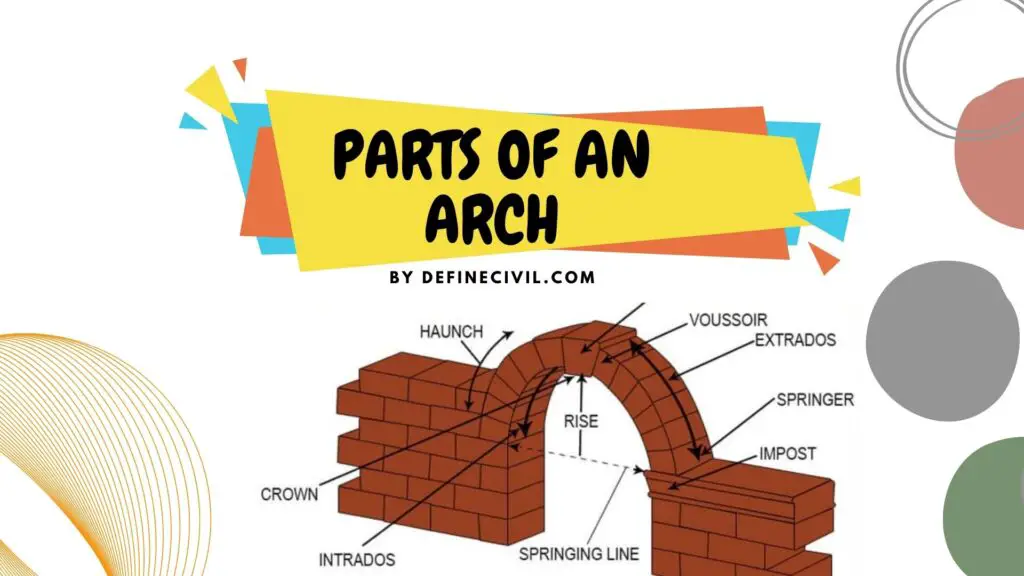So, that arch over an elevated space looks amazing to you and you’re wondering what are some parts of components of an arch. Well, an arch is a structural component that spans a clear opening or space just like a beam. It carries the imposing vertical loading as in case of a window, an arch bridge, or a door opening.
However, arch can also carry horizontal load. Take an example of an arch dam. The force of the water or hydrostatic pressures pusses the arch causing it to straighten slightly. Anyhow, an arch is an amazing structural element that has plethora of benefits over a standard horizontal beam.
An arch lintel can span much wider opening in comparison to a reinforced concrete beam and you won’t even have to provide reinforcing bars. It carries the pressure and resists it in a specific way. It pushes the load downwards and outwards. When you provide supports on both the ends of an arch; you’re making it to resist heavy loads and support heavy structures. The main load on the arch is the compressive load that distributes in two forms – horizontal and vertical component.
Also Read: Lintel Beam – Uses – Types – Advantages – Disadvantages
Ancient civilizations like Romans were keen to use arches. The arch allowed them to make large and complex buildings that can hold more people and provide more space.
Now we’re in a position to answer – what is an arch or define arch?

What is an arch?
Well, an arch is a curved and symmetrical structural element that spans an opening and takes the loading. In simple brickwork, masons place bricks in a way to support each other. At the end of an arch is a pier or abutment that supports the end hinges.
Let’s now discuss some components of an arch:
Parts of an arch
Now I will explain components of arc one-by-one:
Abutment
Abutment is the most important component of Arch. It is the part of the wall or pier that directly takes the arch loading. It resists the lateral and vertical loading that further transfers the same to the foundation.
Keystone
The next most important part of an arch is keystone or boss. As the name implies, it is a wedge shape stone at the apex and is the final piece that locks all the stones of arch in position. This lock or capstone allows the arch or vault to bear the weight.
Arch Ring
As the name implies, it is the curved portion of stone or bricks similar to that of an arch.
Rise
This is the vertical distance between the spring or springing line of an arch or vault and the keystone.
Intrados
The interior lower line or inner curve of the arch is intrados that shows as the concave face. If the loading on the arch is excessive, the designer may provide reinforcement along keystones. Anyhow, intrados is somewhat different than soffit. When we talk about soffit; we refer to a surface whereas intrados is mere a line.
Extrados
This is opposite to that of intrados. It is the convex face of the arch. It bounds the upper edge of the arch.
Springer
The lowest side on each end of the arch is the springer. We can see it as the intermediary component between the arch and the impost.
Impost
For an arch, the impost block or simply impost is a projecting block that rests on top of the column. It is embedded in a wall serving as the base for the springer or lowest voussoir of an arch. The arch starts from the springer and ends at the other end springer.
Also Read: 11 Differences between a Column and a Strut (MUST KNOW)
Haunch
The half curved portion of the arch between the keystone and the impost is termed as haunch.
Crown
As the name depicts, the parts on each side of the crown is hatch. While the crown is the highest point of the extrados or the highest point of the arch.
Springing Line
Springing line is an imaginary line drawn through the junction of the vertical face of the impost with the curve of the intrados. We can also refer springing line as the spring of the arch.



















